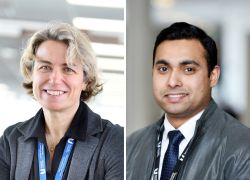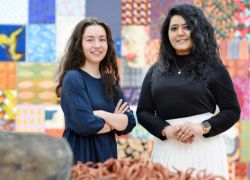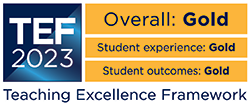Research conference to examine new ways to visualise a crime scene
With the rapid advancement of forensics and the popularity of shows such as CSI, it would seem there is nothing that can’t be solved with forensic science.
But traditional techniques used to examine crime scenes for materials such as DNA and fingerprints may not be as efficient as we are led to believe.
With the increased use of technology, new and novel ways of capturing evidence are increasingly being used by crime scene investigators. A Teesside University academic has used his new book to question the use of tried and tested identification methods and is warning that the process is far too complex to follow a stringent set of rules.
Dr Tim Thompson, Reader in Biological and Forensic Anthropology, will be one of the hosts of the Visualising the Crime conference which takes place at Teesside University on 17 April and will showcase current research within forensic science when industry and university come together.
His new book, Human Identity and Identification, challenges traditional human identity methods such as fingerprints and DNA.
It examines how the social world – what we experience, how we live, what we eat - affects the human body and pieces together the link between the body, environment and society.
Dr Thompson said: 'Few things are as interesting to us as our own bodies and, by extension, our own identities. This book examines the role of the body in human identification, in the forging of identities, and the ways in which it embodies our social worlds.
'With particular reference to bioarchaeology and forensic science, we focus on the construction and categorisation of the body within scientific and popular discourse, examining its many tissues, from the outermost to the innermost, from the skin to DNA. Synthesising two, traditionally disparate, strands of research.'
Teesside University has joined forces with the recently formed, government sponsored, Forensic Science Special Interest Group (SIG) for the Visualising the Crime conference. It will welcome a range of forensic science experts to address issues including visualising 3D evidence, blood stains at a crime scene and post-mortem trauma in skeletal remains.
The free conference is being hosted by Brian Rankin, Head of Teesside University’s Centre for Forensic Investigation, David Errickson, a doctoral researcher and Dr Thompson. It aims to explore the use of new technology to capture evidence at a crime scene, such as laser screening and spectroscopic imaging.
Brian Rankin, who is also a member of the SIG steering group, said the conference will welcome an impressive range of speakers – both from within the University and from industry.
Guest speakers include Dr Ali Anjomshoaa, from the Forensic Science Special Interest Group, Hazel Biggs, Home Office Forensic Development Officer and Barry Coppinger, Cleveland’s new Police and Crime Commissioner.
Brian Rankin said: 'We are delighted to be hosting this conference at the University and I am sure the guest speakers will be able to offer a new insight into how to visualise a crime scene.
'Teesside University has a fantastic reputation in forensic science and conferences like this can only enhance and strengthen the University’s position as a leading institution in this field.'
In addition to the conference, Dr Thompson is also working alongside award-winning visual artist Eric Fong who has been given an Artist in Residence grant by the Leverhulme Trust and is working with forensic and crime scene scientists at Teesside University’s School of Science & Engineering exploring the topic of identity, objectivity and difference in the human body.
Eric Fong will present some of his work at the Visualising the Crime Conference, which takes place from 1.30pm to 7.30pm, on Wednesday 17 April in Teesside University’s Stephenson Building.
For more information, or to book a place, email d.errickson@tees.ac.uk.
Teesside University offers a range of crime scene science and forensic science degrees which are supported by a crime scene house laboratory, a digital evidence laboratory and a substantial multi-vehicle examination laboratory and court room. Further laboratories are equipped with a full range of optical microscopes, chemical analysis equipment and a DNA suite which allows students to produce DNA profiles.
 Teesside University academics join prestigious network of
...
Teesside University academics join prestigious network of
... Curatorial studies culminating with international art
...
Curatorial studies culminating with international art
... Teesside animation graduates receive top regional Royal
...
Teesside animation graduates receive top regional Royal
...